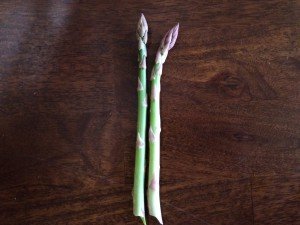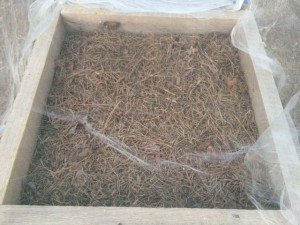Naturally leavened (ie. lacto-fermented) bread is believed to share a timeline with agriculture itself, dating back to the Neolithic age.Modern bread is an entirely different end product as a result of divergent ingredients, chemical reactions, processes and cooking methods. The distinction between what has been called bread historically and what we call bread today, is not a small one.This fascinating article from the Whole Grains Council highlights one Italian study using a particular strain of sourdough lacobacilli and fungal proteases to ferment dough and results in a bread that it meets the standard for gluten-free labeling without any additions, deletions or adulteration. As these sorts of studies continue, it will be interesting to see what else we learn about historic bread's nutritional composition and that made it uniquely poised to persist as a staple for almost every known culture over the last 10,000 years.
Read MoreThe New Normal
The phrase "the new normal" usually has all the cheer of a dark, grey storm cloud with it's reference to sluggish GDP growth, wage stagnation and growing wealth inequality, but there is another new normal that is happening parallel to the business one that has a bit of a silver lining quality to it - the rise of urban and suburban farming.There has been a definite uptick in the number of news stories about urban agriculture over the past couple of years, but I found this recent bit of research by Redfin particularly illustrative of how the backyard garden has moved to the forefront. With my own metro ranking #10 and fully 12.7% of listings studied having the word 'garden' presumably as a selling feature, urban and suburban food production might just be the new normal.
Read MoreOne Boy, Three Sisters
Me: Let me snap a picture before you plant the rest of the seeds.9yo: Sure, but let me grab the dibber first!I served in an advisory capacity last weekend as my 9 year old planted Glass Gem and Strawberry Popcorn, two beautiful heirloom varieties of flint corn he chose for his own garden crop this year. I chose California Blackeye Peas and a gift of Italian squash seeds called Zucchino Tondo Chiaro Di Nizza to be planted with the corn over the coming weeks to create our own Three Sisters planting with our crops growing together, supporting and benefiting each other.As we worked we talked about proper spacing (math), germination (biology), the magic of life held in each one of the seeds in his hand (reverence), and of the future harvest (patience).There is more growing in my garden than just food, I am growing a person.
Read MoreA Berry Short Haircut
Last fall I had a niggle as I watched the lush, green growth of the strawberries yellow in some places and brown in other. I made a cursory search for winterizing strawberries and fall strawberry preparation and did not find what I was looking for, so called it good and lived in ignorant bliss all winter.This year, as spring sprung and my strawberry plants reached an almost concerning level of denseness while thickly mulched with some of last years dying and crumbling growth, I searched again and still came up with nothing and went back to my bliss and the rest of my to-do list.Then a few weeks ago I saw a video from Curtis Stone visiting a farmer in New Zealand, who, by the way, fetched 661 lbs. of strawberries off of his 600 first year plants discussing between 3:55 - 6:05, cutting down the current year's growth to force the plant into new, disease and fungus free growth for next year.My June Bearing Strawberries are already thickly in bloom, covered in green strawberries and tonight I saw the first blush of pink. Since I cannot do anything else until the end of this year's growing season, I went back to my research and found that a slightly different search term (cutting back strawberries) yielded the result I was seeking.This is one of those bad news/good news things.Bad news: The only thing I can really do between now and the end of season when I can cut back the green growth and make clean beds for next year, pulling out the older plants, making room for newer growth, is hand cleaning some of the decaying leaves, using them for mulch on very different plants so as not to transmit any fungus or disease between cultivars.Good news: In this case, that persistent niggle is my good news. I am far from an expert and I don't hold the title Master Gardener, but I am beginning to have a real intuition, a sense of what might need to be researched and considered for my various plants. I do consider myself a pretty good researcher and on this one I missed my target more than once, but I am feeling good that I have an idea of which questions need to be asked and will listen even more closely going forward. Answers, clearly, may vary!#Kaizen
Read MoreGreen Mulching
While looking for a readily available, organic mulch to compliment my semi-composted pine needles, I have learned that the list of mulching styles and materials is truly endless. The list of possibilities include but is not limited to: sheet mulching, lasagna mulching (which does not actually involve pasta), plastic mulching, deep mulching, green manure mulching (which is green, but not manure), straw mulching...as I said, endless.The option I found most interesting is green mulching, using plant matter that would otherwise go into the compost bins, instead applied directly on the soil as a biodegradable mulch, effectively cutting out the middleman.I have begun this process primarily with weeds in my yard and the few volunteer plants that come up in my garden. This week the main contributor has been the Yellow Woodsorrel that has popped up in clumps all around my yard.Yellow Woodsorrel, so called for the small, yellow flowers it produces, is an edible forage green that is commonly called 'false clover' in the midwest. It has appeared this year in such abundance that I can both have my cake and eat it too by using it as a primary green mulch. Below is the result of just a few minutes worth of pulling sorrel and mulching between asparagus crowns.For my foraging friends, the other edible forage plant I have in abundance this year is Common Chickweed. It has been blooming for months so I use it as a wild edible, but not as mulch to avoid introducing new seeds into the garden.The trick with using any plant you find in your yard (weed, grass or otherwise) as green mulch is to make sure you do not include the flowers or seeds. Even when the flowers seem small and closed it is better to pluck them off before tossing them between plantings."Earth knows no desolation. She smells regeneration in the moist breath of decay." ~ George Meredith
Read MoreFinally Spring - Garden Update
The average last frost date for this area has come and gone and the lowest nighttime temp forecast through the end of the month is 41. I think spring is finally here to stay!The French Breakfast Radishes are speeding toward their 25 days to maturity and the Lollo De Vino Lettuce is by far, the prettiest lettuce I have ever grown.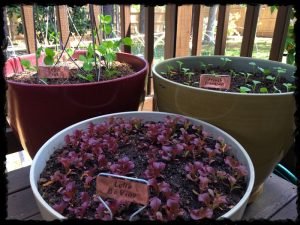 The strawberries are already thickly covered in blooms and green berries.
The strawberries are already thickly covered in blooms and green berries.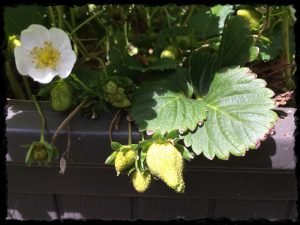 And speaking of "thick", the June-bearing variety I have put out an outrageous number of runners. I tried to stay on top of it last year, giving away dozens of rooted starts and adding many more to the compost bin, but they still managed to do a little guerrilla gardening of their own, sneaking out some late season runners to plant offspring around the designated 4'x8' beds.
And speaking of "thick", the June-bearing variety I have put out an outrageous number of runners. I tried to stay on top of it last year, giving away dozens of rooted starts and adding many more to the compost bin, but they still managed to do a little guerrilla gardening of their own, sneaking out some late season runners to plant offspring around the designated 4'x8' beds.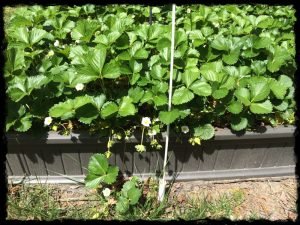 The blueberry bushes are also covered in unripe berries and continuing to bloom. This is their second summer in place and I am hoping the January pruning results in even larger, more plentiful berries than last year.
The blueberry bushes are also covered in unripe berries and continuing to bloom. This is their second summer in place and I am hoping the January pruning results in even larger, more plentiful berries than last year.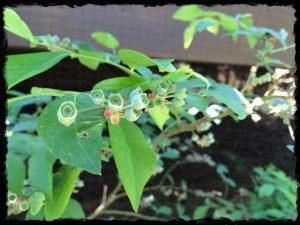 I am growing 2 varieties of Sugar Snap Peas this year, finishing out the last of my Sugar Anns and also growing a variety call simply Sugar Snap.
I am growing 2 varieties of Sugar Snap Peas this year, finishing out the last of my Sugar Anns and also growing a variety call simply Sugar Snap.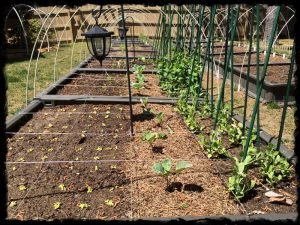 The collards and lettuces in the garden are off to a slow start which I attribute to the mostly cooler weather we have had this spring. With daytime highs starting to reach into the high 70s and low to mid 80s, I think their growth rate will pick up quickly in the next few weeks.And last, but never least, the tomatoes.
The collards and lettuces in the garden are off to a slow start which I attribute to the mostly cooler weather we have had this spring. With daytime highs starting to reach into the high 70s and low to mid 80s, I think their growth rate will pick up quickly in the next few weeks.And last, but never least, the tomatoes.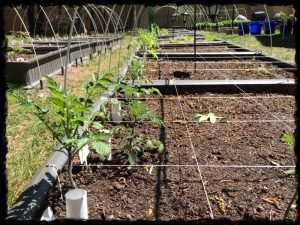 Of the 38 tomatoes that were emancipated at the end of March, I have 37 that are doing very well. The septoria leaf spot has dramatically slowed in it's progression since they were moved outside and the one Rebekah Allen tomato plant that was lost to a nighttime nibbler, has been reseeded indoors and will be replaced outdoors in a month or so.This weekend I will be sowing more herbs in the front and reseeding some of the spinach that has had less than stellar germination rates this year."In the spring, at the end of the day, you should smell like dirt." ~ Margaret Atwood
Of the 38 tomatoes that were emancipated at the end of March, I have 37 that are doing very well. The septoria leaf spot has dramatically slowed in it's progression since they were moved outside and the one Rebekah Allen tomato plant that was lost to a nighttime nibbler, has been reseeded indoors and will be replaced outdoors in a month or so.This weekend I will be sowing more herbs in the front and reseeding some of the spinach that has had less than stellar germination rates this year."In the spring, at the end of the day, you should smell like dirt." ~ Margaret Atwood
Last Frost Date
Last night was a low of 28 so the tomatoes were covered (again) and I am optimistic that it was the last night of freezing temps (again). This time, at least, I have the Average Last Frost Date in my corner...though average and last possible vary by over a month.I the meantime, the container garden on my deck planted with cold weather crops is just fine with or without a light frost. The beautiful colors and daily growth of of these varietals make warmer weather feel not so far away.This is my first year growing Lollo De Vino Lettuce. I had run out of room in the garden for another lettuce but it was just to pretty to resist when I ran across it so I am growing it in a container along with a volunteer cilantro. Another first year variety, the French Breakfast Radishes have sprouted.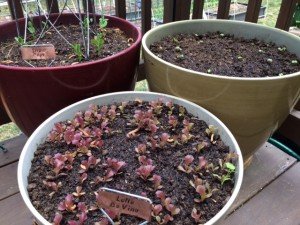 I planted Snow Peas in the container garden this year to add some height contrast to the low growing lettuce and radishes. The easy access to peas and shoots is a total bonus.Today's cold weather task is to give some overdue attention to the indoor basil garden which needs some pruning and thinning.Happy Average Last Frost Date (for Raleigh NC)!
I planted Snow Peas in the container garden this year to add some height contrast to the low growing lettuce and radishes. The easy access to peas and shoots is a total bonus.Today's cold weather task is to give some overdue attention to the indoor basil garden which needs some pruning and thinning.Happy Average Last Frost Date (for Raleigh NC)!
Growing Smiles - Early April Planting
Avant Garden
The single, yellowed leaf I found on one of my paste tomatoes at the end of February was actually the opening shot of a fungal tug-of-war that will likely continue for the whole of 2016's growing season. The Septoria Leaf Spot fungus which can cause damage to tomatoes by defoliation leading to sunburned fruit has been mostly contained by removal of affected leaves and regular use of a homemade organic fungicide (1 gallon of water, 2 TBS vegetable oil and 2 TBS baking soda) but the close proximity of the plants to each other while they are stuck in my indoor grow room was almost certainly encouraging the spread of the fungus.With about a week to go before the last frost date for my area, I have been obsessively checking the 15 day weather forecast for the past few days to determine whether I could risk putting the tomatoes out a little early to give them some much needed space, fresh breezes and sanitizing sunshine to inhibit the fungus from spreading. Today I rolled the dice and moved them to the great outdoors!The PVC tubes that my bamboo tomato supports fit into are already in place so the plant roots will not be disturbed later in the season when they are necessary and the tomatoes have been hardened off.Last year I had a handful of tomatoes that had blossom end rot so I saved eggshells all winter and crushed them into a powder to provide more calcium to the plants. Tomatoes are a vine plant that will root along their stem, so mine were laid down in the channel I dug rather than placed upright. Eggshells were spread beneath and on top of the root area.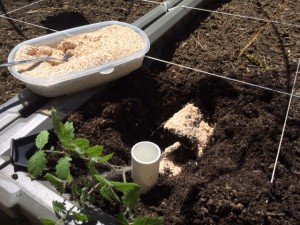 The stem is gently bent at a 90 degree angle several inches up from the top of the soil line from the starter cup. Roots will develop along this stem and according to Charles H. Wilbur, more roots will result in more tomatoes.
The stem is gently bent at a 90 degree angle several inches up from the top of the soil line from the starter cup. Roots will develop along this stem and according to Charles H. Wilbur, more roots will result in more tomatoes.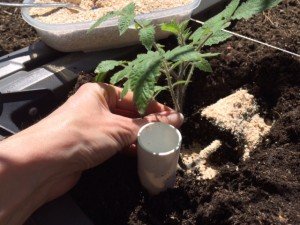 Soil is patted down over the tomato root and around the bent stem and any leaves touching or near ground level are removed to avoid splash up from the soil leading to new and exciting fungal infections.
Soil is patted down over the tomato root and around the bent stem and any leaves touching or near ground level are removed to avoid splash up from the soil leading to new and exciting fungal infections.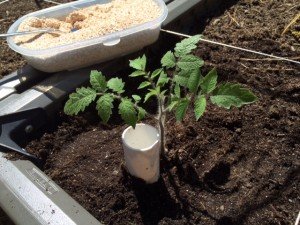 Repeat 37 more times then relax and start compiling fabulous tomato recipes like this one while you wait for the fruits of summer to appear!
Repeat 37 more times then relax and start compiling fabulous tomato recipes like this one while you wait for the fruits of summer to appear!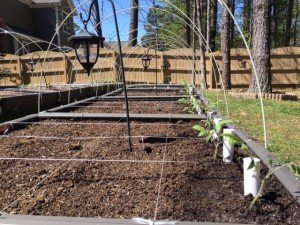
Farmin' the Front
For years I have been sporting an agricultural mullet - suburban-nice in the front and a garden-party in the back, but no more.Yesterday I ripped out the low growing juniper bush that was taking up half of the space between my sidewalk and front porch to make room for my 2016 herb garden. Soon this space will be growing french tarragon, rosemary, parsley, oregano, thyme, sage and if I am lucky, chives*. I will also be sprinkling in some Mother of Pearl Poppy flowers between my herb plantings to maximize the planting space for me and add visual interest for my suburban neighbors.I left the viburnum and nandina landscaping bushes in the back 1/2 of the space alone for now...* Does every gardener have a plant nemesis? Some varietal that stubbornly refuses to thrive despite trying year after year in different conditions? Mine is chives.
Soon this space will be growing french tarragon, rosemary, parsley, oregano, thyme, sage and if I am lucky, chives*. I will also be sprinkling in some Mother of Pearl Poppy flowers between my herb plantings to maximize the planting space for me and add visual interest for my suburban neighbors.I left the viburnum and nandina landscaping bushes in the back 1/2 of the space alone for now...* Does every gardener have a plant nemesis? Some varietal that stubbornly refuses to thrive despite trying year after year in different conditions? Mine is chives.
Making Lemonade
Unless I take the time to carefully pluck them out, one by one, before taking a garden pic, you have probably noticed the indecent number of pine needles lurking in the background of EVERY PHOTO I TAKE!Once upon a time I had big dreams of chicken wire leaf bins in my backyard to effortlessly convert the sweet gumball and maple leaves raked up each fall into garden gold over the course of a year. In these fantasies I would empty the bins the following fall and add the compost to my garden before starting the cycle over again.Instead, the home I purchased has pine trees. Loblolly Pine trees (Pinus taeda) to be exact and the leaves they shed do not turn into lovely compost over the course of a year but instead, remain defiantly pine needle-like for much, much longer.After a bit of debate and confirming that pine needles making soil acidic is actually an old wives tale, I decided to compost them anyway (note: this was my idea, not the pine needles').Then, magically, after two years of composting, I have...pine needles!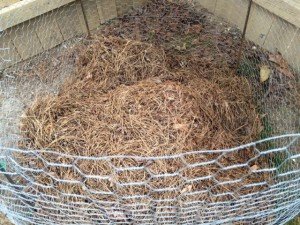 Pine needles don't turn into compost very quickly, but one of my goals this year is to mulch and I have been casting around for a sustainable, organic mulch that would work well in my garden beds. After two years of composting, I did get somewhat broken down needles that would work very well as a mulch.
Pine needles don't turn into compost very quickly, but one of my goals this year is to mulch and I have been casting around for a sustainable, organic mulch that would work well in my garden beds. After two years of composting, I did get somewhat broken down needles that would work very well as a mulch.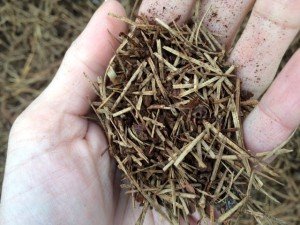 I started mulching around my transplanted collards while I wait for my direct sown spinach and sugar snap peas to fully sprout and I have to admit the result is quite nice.
I started mulching around my transplanted collards while I wait for my direct sown spinach and sugar snap peas to fully sprout and I have to admit the result is quite nice.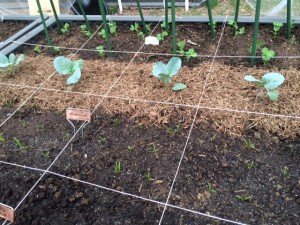 Because I have been turning the needles in their bin throughout the year, I know they hold moisture and attract earthworms so should work well as a mulch.
Because I have been turning the needles in their bin throughout the year, I know they hold moisture and attract earthworms so should work well as a mulch. Okay, that was a completely gratuitous pic just because they looked so pretty.So now, I have made lemonade from my lemons and looking over my garden plan now I find myself in the position I could not have conceived of a year ago, I am not sure I have enough pine needles!
Okay, that was a completely gratuitous pic just because they looked so pretty.So now, I have made lemonade from my lemons and looking over my garden plan now I find myself in the position I could not have conceived of a year ago, I am not sure I have enough pine needles!
Paradigm Shift
I sometimes forget the prevailing notions people have related to growing food. The most common mental images seem to center around long hours of back breaking labor spent tilling, planting, hoeing and weeding.I am quickly reminded of the current thinking when I breezily say things like, "I planted 288 spinach plants today and need to do the same for lettuce tomorrow." and the person I am speaking with gapes in horror at the perceived amount of time and effort that goes into it. But the chasm between what they are thinking and what I actually did is as big as the Grand Canyon. We are operating under two VERY different paradigms when it comes to growing food...Depending on the agricultural model used, growing food can be relatively low-labor and the little time and money spent in the garden is subtracted directly from the time and money that would otherwise be spent driving to the grocery store, finding produce that is less nutritious and fresh, waiting in the checkout line to pay and then driving home on a daily or weekly basis.This morning I planted 36 Red Romaine lettuces and the whole process took about 20 minutes. I started with a homemade plant spacing tool made from plywood, cheap cabinet handles and recycled wine corks: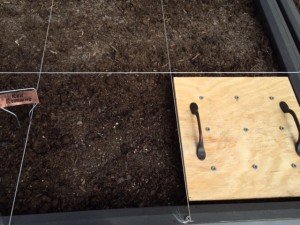
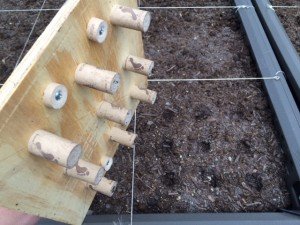 Lettuce can be planted 9 to a square foot so I pressed the spacer into 4 of my 1'x1' squares to leave divots where the seeds should be planted.Next I shook out some seed into my palm and placed 2 per divot. I normally have really good germination rates with the Baker Creek lettuce seeds, but these are last year's seeds so I did 2 to be safe. This was the most time intensive part of the whole operation but not what I would call laborious.
Lettuce can be planted 9 to a square foot so I pressed the spacer into 4 of my 1'x1' squares to leave divots where the seeds should be planted.Next I shook out some seed into my palm and placed 2 per divot. I normally have really good germination rates with the Baker Creek lettuce seeds, but these are last year's seeds so I did 2 to be safe. This was the most time intensive part of the whole operation but not what I would call laborious. When I was done I patted the soil over the seeds, lightly covering them and creating good dirt to seed contact then watered.
When I was done I patted the soil over the seeds, lightly covering them and creating good dirt to seed contact then watered.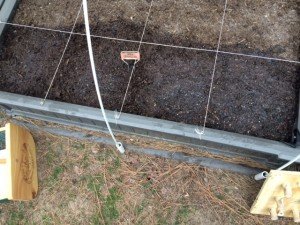 Voila!Yes there will be some watering throughout the season and yes, I do get an occasional volunteer plant that needs to be plucked out of my garden beds, but those are minor things, easily taken care of when I head out to my backyard grocery store each night and look around to see what's for dinner.
Voila!Yes there will be some watering throughout the season and yes, I do get an occasional volunteer plant that needs to be plucked out of my garden beds, but those are minor things, easily taken care of when I head out to my backyard grocery store each night and look around to see what's for dinner.
Springing Ahead
After a week of travel, timezone jet lag and leaping ahead an hour, I returned home to find my spring garden well underway.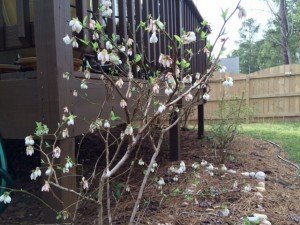 The blueberries and strawberries are already in bloom and hoping the 33 degree overnight currently forecast for Monday night doesn't damage them.
The blueberries and strawberries are already in bloom and hoping the 33 degree overnight currently forecast for Monday night doesn't damage them.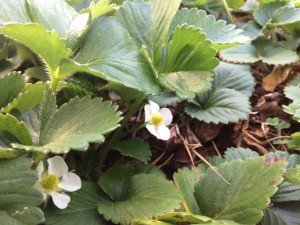 The collards, cabbage and kale have been hardened off and were transplanted yesterday near the sprouting spinach, pak choy, lettuce and sugar snap peas.
The collards, cabbage and kale have been hardened off and were transplanted yesterday near the sprouting spinach, pak choy, lettuce and sugar snap peas.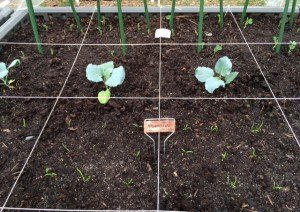 The 8 spears of asparagus that have been harvested so far have been well worth the 1 year wait and I hope some crowns that have not yet produced will begin to send up spears soon. In the meantime, I am becoming an expert on making a little asparagus go a long way in dishes.
The 8 spears of asparagus that have been harvested so far have been well worth the 1 year wait and I hope some crowns that have not yet produced will begin to send up spears soon. In the meantime, I am becoming an expert on making a little asparagus go a long way in dishes.
Batting 500
Then There Was One
This morning I did my final pass thinning the tomatoes, peppers, collards, cabbage and kale down to a single plant in each starter cup and then I crossed my fingers that no fungi or pests find my singletons between now and when they move outside.For now the 38 tomato plants are vigorous and hale and I am excited that fully half of them are from my own saved seed.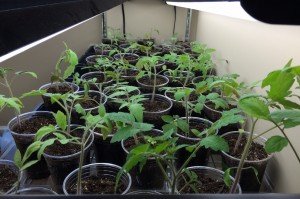 I added a few new varieties this year of both slicing and cherry tomatoes and plan to save seed from all I want to grow again next year.The cabbage and collards are nearly ready to be hardened off and will join the lettuce, spinach and leeks I will be direct sowing this weekend.
I added a few new varieties this year of both slicing and cherry tomatoes and plan to save seed from all I want to grow again next year.The cabbage and collards are nearly ready to be hardened off and will join the lettuce, spinach and leeks I will be direct sowing this weekend.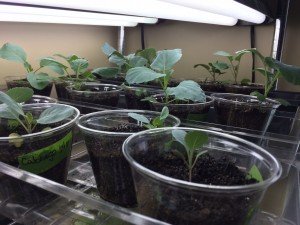 Now that the 2 week forecast has no nighttime temps below freezing it is time to get the spring garden into full swing!
Now that the 2 week forecast has no nighttime temps below freezing it is time to get the spring garden into full swing!
Don't Blink
During the past week of business travel my indoor plant starts have grown with the vigor of youth into a verdant and slightly unruly bunch of tweens. The tomatoes from my saved seed are particularly in need of thinning. I seeded them a little more thickly since I did not know what my germination rate would be. While they initially lagged about week behind fermented seeds I purchased this year, the germination rate for my saved seed looks to be close to 100%.
The tomatoes from my saved seed are particularly in need of thinning. I seeded them a little more thickly since I did not know what my germination rate would be. While they initially lagged about week behind fermented seeds I purchased this year, the germination rate for my saved seed looks to be close to 100%. Pro Tip - always use scissors to snip off the plants you are thinning to avoid disturbing the roots of chosen specimen.
Pro Tip - always use scissors to snip off the plants you are thinning to avoid disturbing the roots of chosen specimen.
Tender Beginnings
While winter is having it's (hopefully) last hurrah outside, I am prepping my indoor garden to be without me for a week while I travel for work.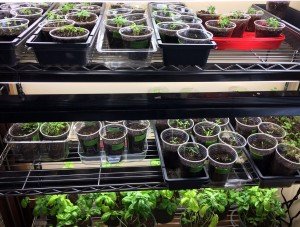 After trying first newspaper pots then peat pots for last year's starts and having them disintegrate before I was ready to transplant to the garden, this year I am using Siloé Oliveira's technique of drilling holes in smooth plastic cups that can be reused year after year.All of my starts are doing well but the ones I am happiest about are my saved seed from the Paste and Amana tomatoes I grew last year. They sprouted a few days behind the new varieties I purchased seed for this year, but since I did not ferment the saved seed I knew they would lag a bit.
After trying first newspaper pots then peat pots for last year's starts and having them disintegrate before I was ready to transplant to the garden, this year I am using Siloé Oliveira's technique of drilling holes in smooth plastic cups that can be reused year after year.All of my starts are doing well but the ones I am happiest about are my saved seed from the Paste and Amana tomatoes I grew last year. They sprouted a few days behind the new varieties I purchased seed for this year, but since I did not ferment the saved seed I knew they would lag a bit.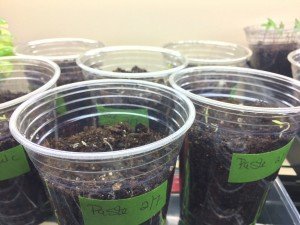 And gratuitous pics of some of the collards and other tomato varieties starts just because they are so pretty...
And gratuitous pics of some of the collards and other tomato varieties starts just because they are so pretty...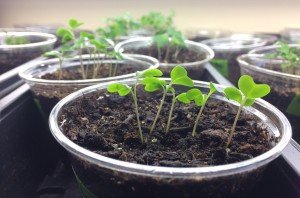
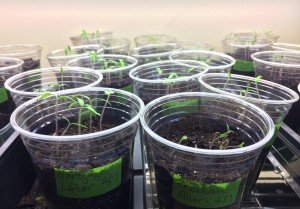
Starting My Garden Early
While Punxsutawney Phil and the meteorologists work out their differing predictions for the end of winter, growers are already hard at work preparing for spring, summer and fall.January plant starts included cabbage,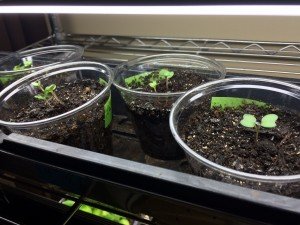 chili peppers, bell peppers and rosemary.
chili peppers, bell peppers and rosemary.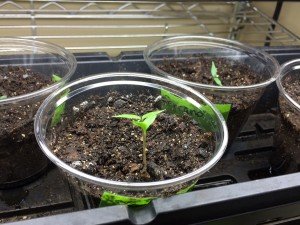 Now that February has begun, the seed starting kicks into high gear with oregano, collards and lots and lots of tomatoes with 8 varieties and a total of 38 plants this year!
Now that February has begun, the seed starting kicks into high gear with oregano, collards and lots and lots of tomatoes with 8 varieties and a total of 38 plants this year!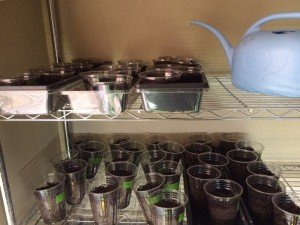 The new starts will welcome roommates in my growing nook for the cilantro and basil I grow indoors each winter. I purchased inexpensive shop lights, metal wire shelving units and florescent tubes 5 years ago so I never have to go a grey winter day without their bright colors and fresh flavors complimenting meals.
The new starts will welcome roommates in my growing nook for the cilantro and basil I grow indoors each winter. I purchased inexpensive shop lights, metal wire shelving units and florescent tubes 5 years ago so I never have to go a grey winter day without their bright colors and fresh flavors complimenting meals.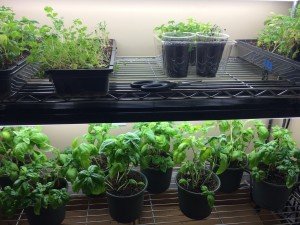 The minimal, initial investment for the equipment has more than paid for itself already and now as my garden diversifies and the number of indoor starts continue to expand each year with no additional infrastructure costs to date, I consider this money extremely well spent.Happy Spring, whenever it comes :)
The minimal, initial investment for the equipment has more than paid for itself already and now as my garden diversifies and the number of indoor starts continue to expand each year with no additional infrastructure costs to date, I consider this money extremely well spent.Happy Spring, whenever it comes :)
New Year's Resolutions (Then and Now)
For 2015 I set two gardening goals for myself - begin keeping a garden log and saving seed and I did pretty well on both of them. My 2015 garden log ended the year with 8 typed pages and containing details from pounds of tomatoes and serranos harvested to the date of the first and last blueberries. I used Word for Mac so I can keyword search in 2016 (and beyond) if I want to find when I planted the 3rd crop of edamame or when my squash and cucumbers were invaded by cucumber worms. I found I was more diligent about doing entries if I kept the document open on my second monitor at all times so when I began the 2016 garden log earlier this month detailing all the indoor starts for January, I continued with this practice.Prior to 2015, I had only saved my own cilantro/coriander seed and purchased everything else. At the end of 2015 I had saved 10 different varieties of everything from squash and chili peppers to flowers and tomatoes. My seed box, which has always been full of Baker Creek Heirloom Seeds packages is now peppered with the plain brown paper envelopes that I use for my own seed.For 2016 my two goals are saving even more of my own seed and mulching. Going from 1 to 10+ varieties that I saved seed from in 2015 is good, but I am growing over 53 annual varieties in 2016 so there is plenty of room to continue to improve in this goal.The Square Foot Gardening method I use places a heavy emphasis on compost but almost none on mulching. The SFG method recommends starting with a 33% compost mixture in the raised beds and continually adding compost as plants are removed and new plants added to each individual square foot, but no mention of covering the soil between and around plants. Soil science as well as observation have led me to understand that just as nature abhors a vacuum and will swiftly fill it, soil abhors being exposed and will cover itself with weeds if it must to protect it from the wind and the sun, allowing it to retain water better and reduce erosion.So for 2016 I will be experimenting with different types of mulches in my beds to see what works best, doesn't invite too many visiting pests and makes the plants and soil happy and healthy.Here's to getting better every year! #Kaizen
Will Work For Food
The phrases urban agriculture and urban farming answer the where and the what, but not necessarily the why of food production. Some urban growers are producing for personal use (which could include sharing their excess bounty with friends, neighbors and coworkers) while other growers are producing food as part or all of their household income stream.While these two groups take very different approaches to growing, watching Curtis Stone's Profitable Urban Farming workshop intro showed me that the personal grower can learn from some of the strategies and efficiencies of the income grower. We are both working to grow food so a little cross pollination (pardon my pun) of ideas can be beneficial.In this 42 minute video he gives an overview of his commercially successful urban farm in Kelowna, BC. For income growers, there are a lot of interesting ideas presented. He has an innovative strategy for land acquisition that is essentially OPP, other people's property. He rents portions of front, back and side yards from homeowners in his city within a 1 1/4 mile of his home to grow his produce.A very interesting strategy he uses that can be adapted for personal growers is how he categorizes crops as either "quick" or "steady". Quick crops are crops that are ready to harvest in less than 60 days. Steady crops are those "cut and come again" crops that take longer but provide a more sustained harvest. With his 5 growing plots scattered across 1 1/4 mile, he grows his quick crops in the plots closest to him, since they need to be visited more often for planting, rotation and harvest. He plants his steady crops in the furthest plots to since they only need to be harvested once or twice per week.Personal growers can adapt this concept and plant their baby greens and lettuces in the part of their garden closest to the house and plant the squash and onions in the far part of the garden since they need less regular attention.For growers looking to build or expand their business, this video is packed with information. For personal growers, there are some great tips on layout, harvesting and drip irrigation that can be implemented in home gardens.In addition to this workshop intro video, he has a lot of other videos on his YouTube channel worth perusing for both income and personal growers.



